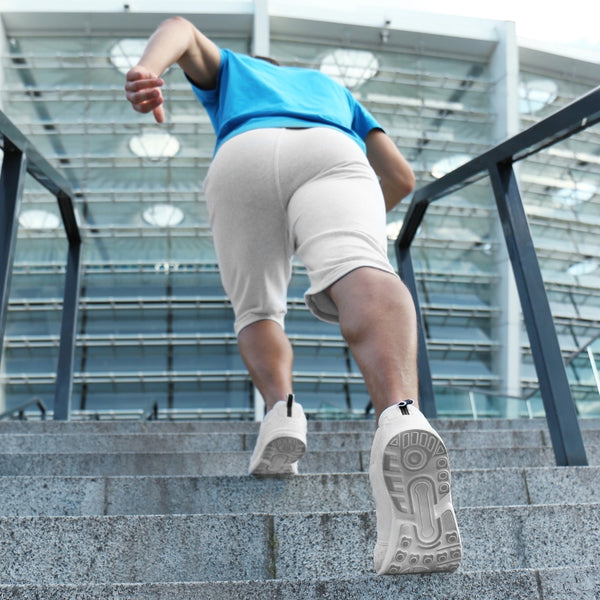Interval Training For Weight Loss
So you’ve seen the rise of group training and the ‘Fast 45’ style functional fitness gyms, and wondering what all the fuss is about? Personal Trainers, Fitness Instructors, Running Coaches, Physicians, and Training Experts all understand the benefits of interval training and how it can correlate to weight loss. If you want to see the benefits for yourself, you’ve come to the right place. We uncover everything you need to know about interval training, what it is, how it works, and why it's so effective for losing fat!
What is Interval Training?
Put simply, Interval training is a type of exercise that involves alternating periods of high-intensity activity with periods of rest or low-intensity activity. This type of training is often used by athletes to improve their aerobic performance, but it's also a great way for anyone to get in shape quickly and lose weight.
So, how does interval training work from other forms of exercise? When you perform high-intensity exercise, your body burns more calories than it does during low-intensity exercise because high-intensity exercise requires more effort and requires more energy. Picture this, if you run 1 kilometer in 10 minutes, your body has a reasonable amount of time to complete the task without using an extreme amount of effort. Conversely, if you were asked to sprint 100 meters in under 20 seconds at the start of each minute over 10 minutes, you would have run the same distance, but used much more energy to achieve the same result. The difference is that your body has to work harder to keep up.
Additionally, high-intensity exercise causes your body to continue burning calories even after you've finished working out, which is known as the "afterburn effect". It’s the same as stoking a fire to keep it burning long after you've added the logs of wood. Stoking the fire increases its temperature and keeps it burning hotter for longer. Interval training raises your metabolism, helping you burn calories even after you finish exercising. So just as a well-tended fire can keep you warm for hours, interval training can help you burn calories for hours after your workout is over.

Interval training Variations
There are many different types of interval training workouts, but they all follow the same basic principle: alternating periods of high-intensity exercise with periods of rest or low-intensity exercise in between. Some popular types of interval training include:
High-intensity interval training (HIIT)
- Tabata
- Fartlek training
- Circuit training
- Interval running
Each of these types of interval training has its own unique benefits and drawbacks, so it's important to briefly understand each method and choose the one that's right for you. HIIT, for example, is a great way to improve cardiovascular fitness and burn a lot of calories in a short amount of time, but it can also be very intense and may not be suitable for everyone. As high-intensity exercise requires your heart to work harder to pump oxygen to your muscles, anyone who has had or is susceptible to heart complications should consult their doctor before engaging in intense exercise.

Effects on the body
So, why is interval training so effective for fat loss? There are several reasons and as mentioned earlier, high-intensity exercise burns more calories than low-intensity exercise but Interval training specifically helps to improve fat oxidation. Fat oxidation is the process of breaking down fat cells that are found in healthy mitochondria through the supply of oxygen around the body. This is where interval training has its most useful effects as it helps to increase your metabolism, which means you'll continue to burn calories even after you've finished working out!
Interval training also helps to preserve muscle mass while you're losing weight. If you're in a calorie deficit (i.e. consuming fewer calories than you're burning), your body will start breaking down muscle tissue for energy. By incorporating interval training into your workout routine, you can actually help to prevent muscle loss and actually improves the muscle-rebuilding process after exercise.
In addition to these benefits, interval training is also a great way to improve your overall fitness and endurance. By pushing yourself to work harder during each interval, you'll gradually increase your stamina and you will be able to perform more intense workouts over time.

Getting Started
So, how do you get started with interval training? Here are some basic guidelines to help you get the most out of your workouts:
- Start slow: If you're new to interval training, it's important to start slow and gradually increase the intensity and duration of your workouts. Begin with short intervals (e.g. 30 seconds of high-intensity exercise followed by 30 seconds of rest) and gradually work your way up.
- Mix it up: To keep your workouts interesting and prevent boredom, try mixing up your intervals with different exercises and intensities. For example, you could alternate between running and cycling, or switch between high-intensity and low-intensity exercises.
- Use proper form: When performing high-intensity exercises, it's important to use proper form to prevent injury and get the most out of your workout. If you're not sure how to perform a particular exercise, consider working with a personal trainer or watching instructional videos online through the Force USA App.
- Listen to your body: Interval training can be very intense, so it's important to listen to your body and not push yourself too hard. If you're feeling fatigued or experiencing pain, take a break and rest.


